The so-called ‘Cathar castles’ are a series of medieval castles in the Languedoc region of Southern France. They are identified through their connection to the Cathars, a religious movement that flourished in the south of France during the 12th and 13th centuries, and which was considered a heresy by the Catholic church.
These Cathar castles sheltered persecuted Cathars during the 13th century when they were the target of an organised crusade. Some of them even housed important religious leaders, becoming centres of the Cathar faith.
Disclaimer: This post contains affiliate links. This means that should you click on certain links and then subsequently purchase a product, I will receive a small commission.
A Guide to Cathar Castles and Catharism
Catharism
Catharism was a dualist or Gnostic (a belief system which emphasised personal spiritual learning over organised orthodox teachings) Christian movement which was considered a heresy by the medieval Catholic Church. Its adherents were known as ‘Cathars’ or ‘Good Christians’, and sometimes ‘Albigensians’ after the city of Albi in southern France, where the faith originated.
At the heart of Cathar cosmology was dualism, the idea that there were two opposing deities, one good and one evil, battling constantly. The first was a good god, creator of human spirits, while the second was an evil god who created the physical world and human bodies.
The evil god was therefore known as Rex Mundi (King of the world). The existence of evil was explained through the cosmic battle between these gods, and the inability of the good god to contain all the machinations of the evil god.
Cathars believed humans to be fallen angels who could only achieve angelic status by renouncing the material world – until then, humans would be reincarnated repeatedly in the world.
There is some debate regarding the origins of Catharism. It seems to have been influenced by Bogomilism, another neo-gnostic dualist sect which thrived in the First Bulgarian Empire – there are a lot of similarities between Cathar and Bogomil belief.
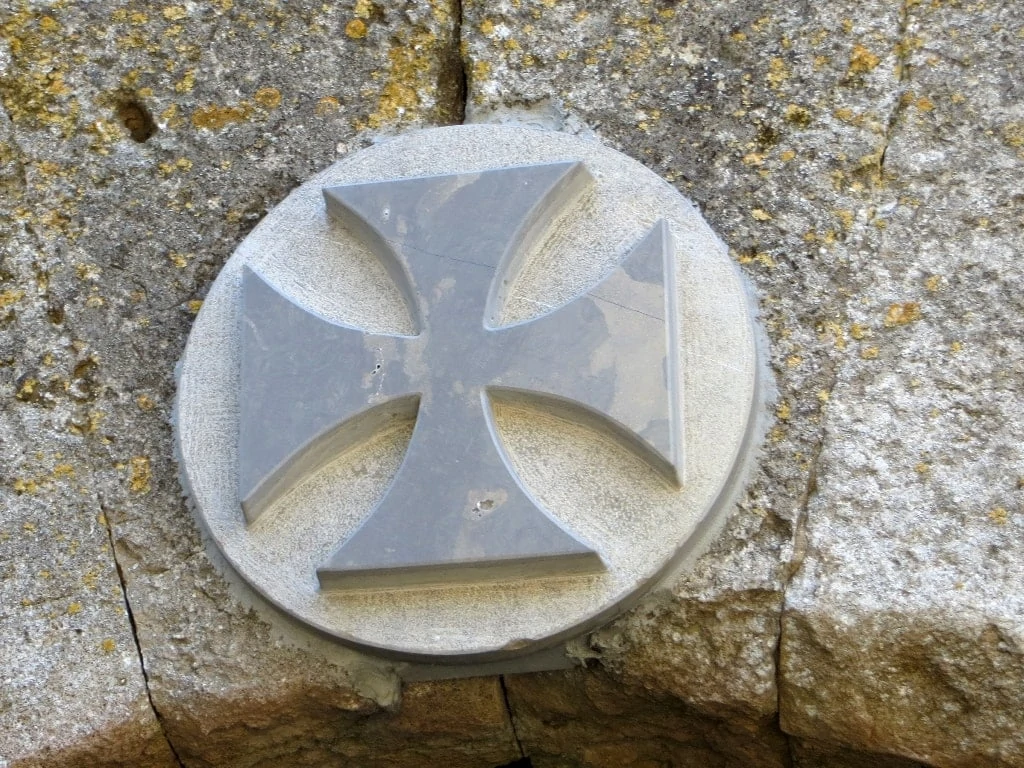
The Paulician movement in Anatolia and Armenia may have ultimately been the genesis of Catharism. It seems likely that these dualistic belief systems slowly spread westwards from the Byzantine Empire, probably through trade routes, developing into Catharism in southern France.
Although we refer to Cathars as a group, there was a great variance in belief among members of the movement, partially thanks to the emphasis on personal spiritual knowledge.
However, during the 12th century, a distinct Cathar hierarchy developed in the Languedoc. The structure of the Cathar church was relatively flat with only two levels, the perfecti (‘perfects’) or bonhommes who had been baptised, and unbaptised adherents known as credentes.
The perfecti were spiritual leaders but led a holy life of austerity and would typically travel in pairs, ministering to the population. Around 1140, liturgy and doctrine had been agreed, and in the second half of the 12th century, a series of Bishoprics were created.
The first was Albi in 1165, followed by Toulouse, Carcassonne and Agen, which were all created following the council at Saint-Félix-Lauragais in 1167. These Bishops had two assistants, known as the filius maior and the filius minor, who in turn were supported by a number of deacons.
Persecution and Conflict
The Cathars were condemned by the catholic church for various reasons – their doctrine was considered deeply heretical (they actually refuted that Jesus was resurrected), and the emphasis on personal spirituality above priestly teaching was a great threat to the authority of Catholic church.
The Cathars opposed what they believed to be the moral, political and spiritual corruption of Catholicism. They even condemned warfare and killing and treated women as spiritual equals.
Beginning in 1147, the Catholic church made attempts to prevent the spread of the movement, which was flourishing in the south of France. These attempts were extremely unsuccessful, as the Cathars had members and allies amongst the nobility and the general population.
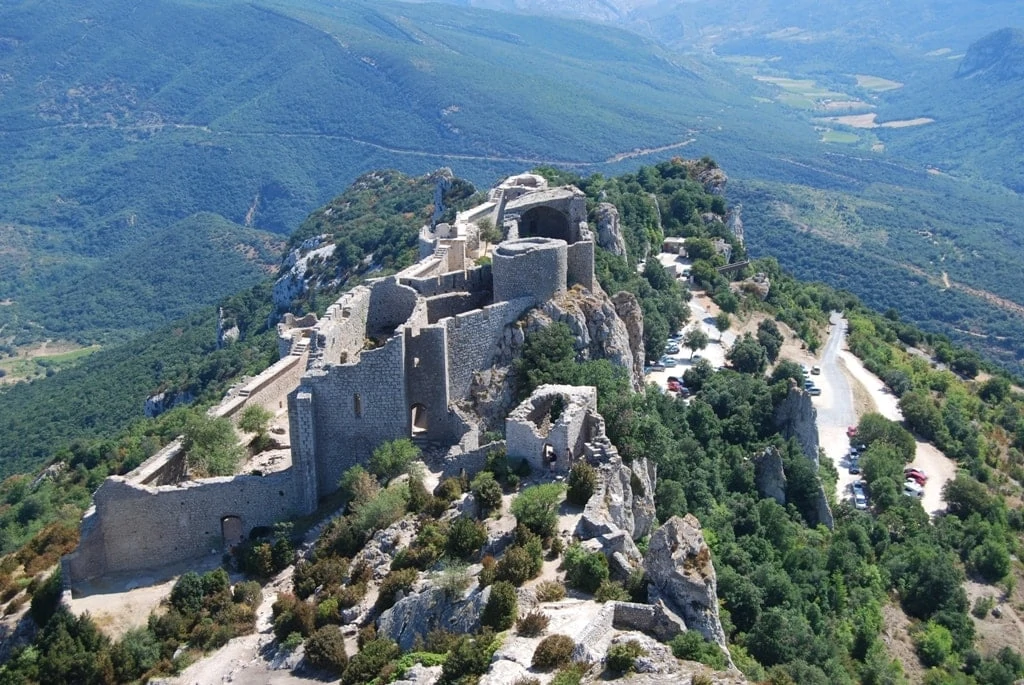
It was the murder of the papal legate, Pierre de Castelnau, in 1208 that led to widescale military action against the Cathars. In response, Pope Innocent III preached a crusade against the heretics which became known as the Albigensian Crusade, promising that the crusaders would be allowed to confiscate and keep any land that they captured.
A great many northern French nobles participated, excited by the prospect of gaining new fiefs – it was in this climate that the Cathar castles existed, held by southern French lords defending their own lands, as well as the Cathars who were their subjects.
Cathar Castles at War
It is important to note that some of the sites designated as ‘Cathar castles’ are in fact later fortifications constructed by the victorious crusaders – although most did have earlier castles at the same locations which offered refuge to the persecuted Cathars during the Albigensian Crusade. Generally, these fortifications are split into castra (walled settlements) and castles.
Although they varied greatly in form and appearance, the primary feature which Cathar castles shared is their remote, often hilltop, location. Cathar strongholds were sometimes fortified settlements, ranging in size from a village to a city, known as castra.

These would have powerful walls to protect the inhabitants and were therefore much larger than what we traditionally think of as a castle. Carcassonne is an excellent example. The town itself is built on a hilltop, which immediately offers excellent strategic advantages, as it is much harder for advancing enemy soldiers to attack uphill.
However, it is from its walls that Carcassonne derives its great defensive strength. Surrounding the entire town in a 3-kilometre circuit, the double-layered concentric walls are fantastically preserved today and represent an extremely powerful concentric castle design.
The walls feature active defence elements, including wide battlements and 52 individual towers along the length of the fortification.
The double concentric wall created an ‘outer bailey’, as the area in between the two walls was known – if attackers managed to breach the outer wall and gain access to this outer bailey they would be stuck in a killing zone with no shelter, and would be extremely vulnerable to the missiles of the garrison.
The inner walls are also far higher than the outer walls, affording defenders an excellent line of sight across the approach to Carcassonne.
Cathar castles also include more traditional castle fortifications. Typically, these were built on mountain tops, or on rugged high ground, and featured curtain walls punctuated by towers.
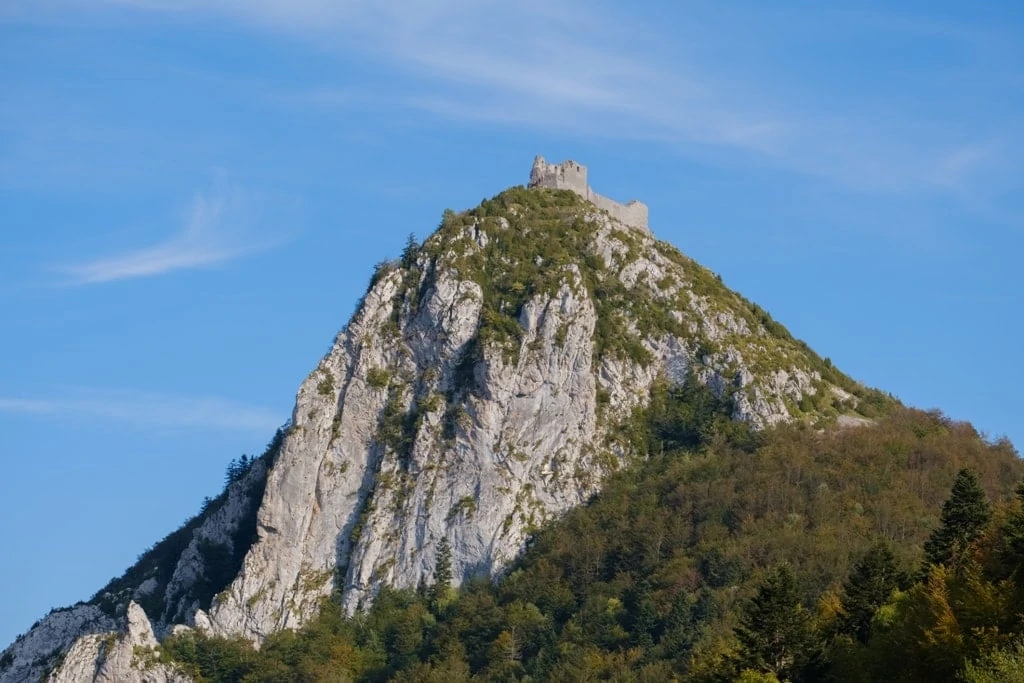
Built in 1204 on the site of a previously ruined castle by Raymond de Péreille, Montségur quickly became a centre of Cathar activity in the region.
It was the seat of one of the Cathar Bishops Guilhabert de Castres, who was also a ‘Perfect’ in the movement, and in 1233 the castle became the centre of the entire Cathar faith, being designated as “the seat and head” (domicilium et caput).
As a result, the castle became the focus of the final crusader efforts to destroy the Cathar movement. The fortification that stands at Montségur today is not from the Cathar era but is instead a later construction – very few traces of the original castle remain, although it is estimated that it housed around 500 people in the early 1240s.
Montségur was besieged unsuccessfully in 1241 and was finally captured in 1242 after members of the Catholic inquisition were murdered by men from the castle community in May of 1242.
By the time of the 1242 siege, Montségur was home to a garrison of around 100 troops as well as 211 ‘Perfects’ (Cathar holy people who had taken a vow of pacifism) and some refugees.
The castle was surrounded by 10,000 royal troops and finally surrendered after a lengthy siege in 1244, after which some 220 Cathars who refused to renounce their faith were burned at the stake.
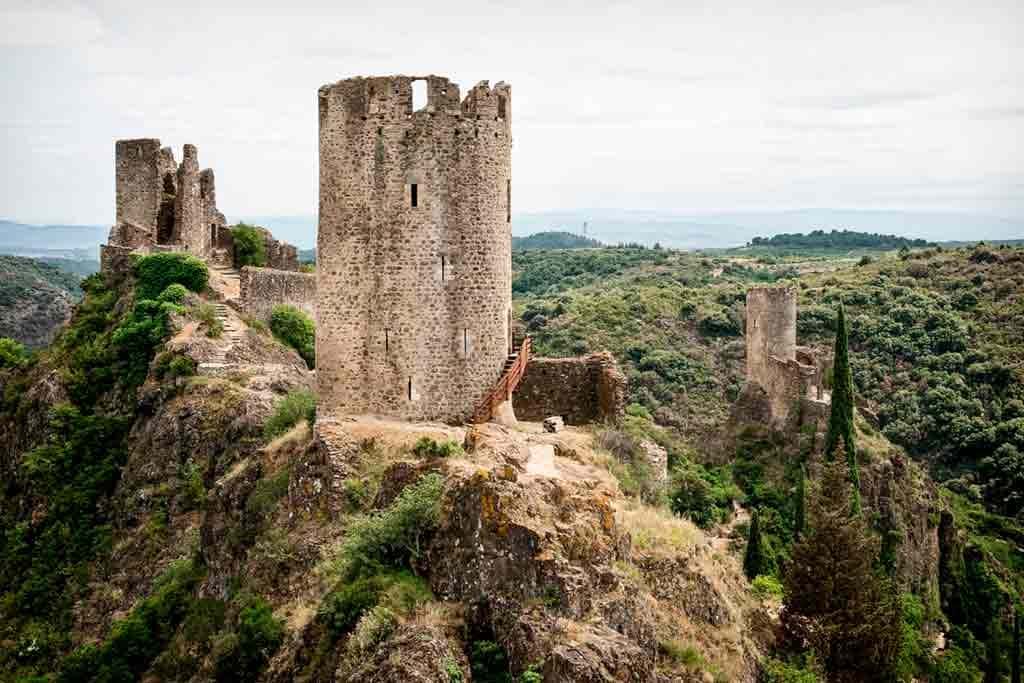
Another castle that became a centre of Cathar activity was Lastours. Similar to Montségur, Lastours was built on a rock spur 400 metres long and 50 metres wide, raised at an altitude of 300 metres above the village of Lastours in the valley below.
Its extremely remote location, and the rough terrain the castle was built on, made it incredibly difficult to assault. The castle itself is unique, in that it is technically made up of four individual castles, all built along the spur – Cabaret, Surdespine and la Tour Régine were built in a line, and Quertinheux sits slightly apart on a separate outcrop.
Cabaret is the principal castle, with a polygonal keep in the south, a tower in the north, and a crenellated wall forming a circuit which encompassed a series of residential buildings.
Surdespine is the highest of the four, consisting of a square tower along with a cistern and house, as well as a rectangular curtain wall. The keep features murder holes as well as semi-circular arched windows. la Tour
Régine is the smallest of the four and may have been built after the Cathar period, with a three-storey round tower, a small circular wall, and a cistern. Quertinheux has a rounded tower and a polygonal curtain wall, and features a bent entrance, with a sharp corner designed to slow down attackers.
During the time of the Cathar heresy, Lastours and its castle belonged to the lords of Cabaret, who were heavily involved with the religious movement.
In 1223 the castle became the seat of the Cathar bishop of Carcassès and housed numerous ‘Perfects’ of the movement – Lastours became a centre of Cathar resistance in the region in the 1220s.
It was captured twice during the Albigensian crusade, once in 1211 and again in 1229.
Cathar castles and castra experienced a great deal of warfare during the Albigensian crusade, which lasted until 1229 and ended with the Treaty of Paris.
While these castles often sheltered Cathars, and sometimes even housed Cathar religious leadership, their owners were often not adherents of the movement.
The lords of the Languedoc were drawn into conflict largely in order to defend claims to their land and to prevent their fiefs being confiscated by French noblemen from the north.
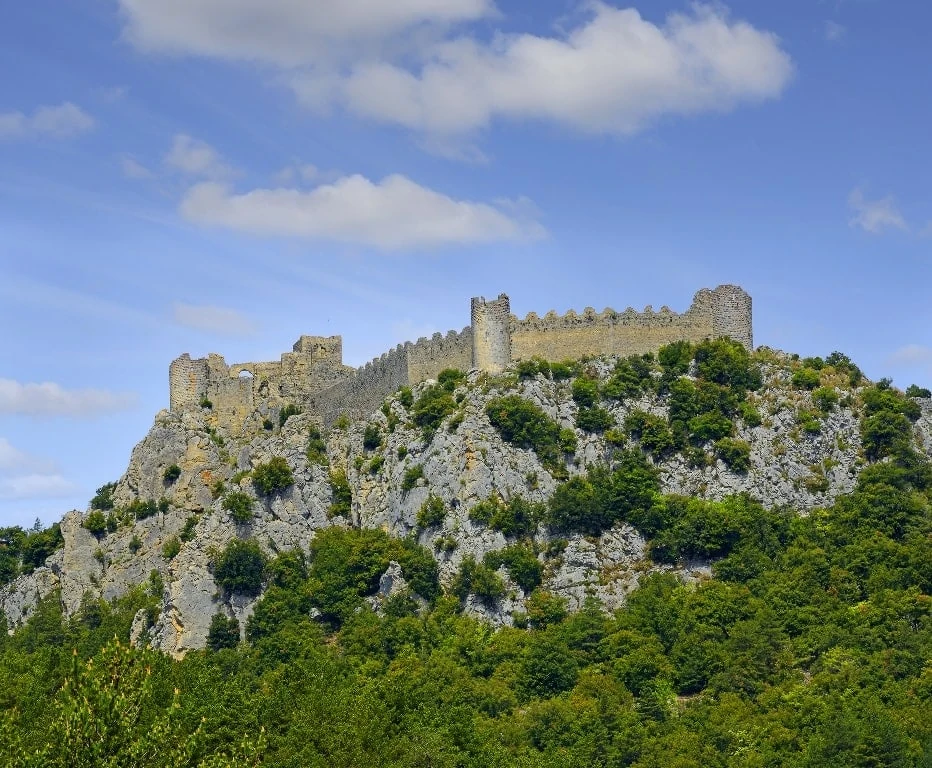
Often, they became involved as part of the wider regional conflict – for example, the lords of Cabaret (who held the castle at Lastours) were feudal vassals of the viscounts of Carcassonne, who were heavily involved in resisting the crusaders.
The remote hilltop Cathar castles were extremely effective as defensive fortifications – they took advantage of developments in castle technology, incorporating active defence features such as murder holes, multiple concentric walls, and bent entrances.
Thanks to their effectiveness, the crusaders often had to resort to starving out garrisons. To attack a hilltop Cathar castle would require ascending extremely steep hillsides and cliffs, all whilst being targeted by the missiles of the garrison.
Following the end of the crusade in 1229, many Cathar castles were rebuilt by their new owners, either on the site of the existing fortification or nearby. As a result, some of the Cathar castles that survive today actually feature fortifications which are later constructions.
Famous Cathar Castles
Fanjeaux
This was a large castrum in the Lauragais region which became a centre of Cathar activities. It was encircled by a curtain wall featuring 14 towers, and also boasted a moat – there was also a castle within the walls which acted as a citadel within the settlement. Later Fanjeaux became the home of the founder of the Dominican order, St. Dominic.
Carcassonne
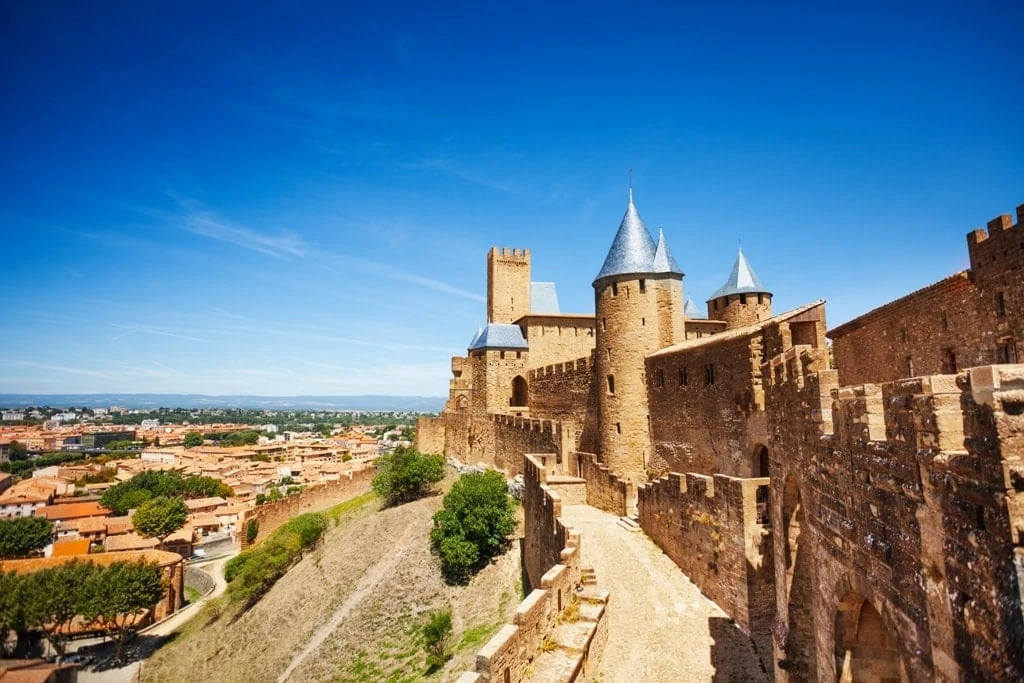
Cathar stronghold with extremely powerful double layered concentric walls. Although the walls maybe a later addition, the castle of Comtal within the walls is certainly considered to be from the Cathar period.
Carcassonne was besieged in 1209 – its lord, Raymond-Roger Trencavel, viscount of Carcassonne and Béziers, was one of the primary targets of the Albigensian crusade.
You might be interested in the following:
Carcassonne: Castle and Ramparts Skip-the-Line Ticket
Cité de Carcassonne: Guided Tour
Béziers
A castrum with a significant Cathar population, the town was sacked by the Albigensian crusaders on 22nd July 1209. The inhabitants of the town were massacred indiscriminately, in an act designed to cow the lords of the Languedoc into submission.
Infamously, when asked by his soldiers how to tell apart Catholics and Cathars during the sack of the town, the papal legate Arnaud-Amaury replied: “Caedite eos. Novit enim Dominus qui sunt eius” (“Kill them all, for the Lord knoweth them that are His”.
Lastours

An unusual fortification in that it is made up of four separate castles, arranged along a rocky spur above the village of Lastours. In the 13th century, there were only three of the four castles that stand there today, Cabaret, Quertinheux and Surdespine.
These three are some of the only original Cathar castles that still stand and were held during the medieval period by the lords of Cabaret, feudal vassals of the Trencavels. During the Albigensian crusade, Lastours was an area of great Cathar activity.
Montségur
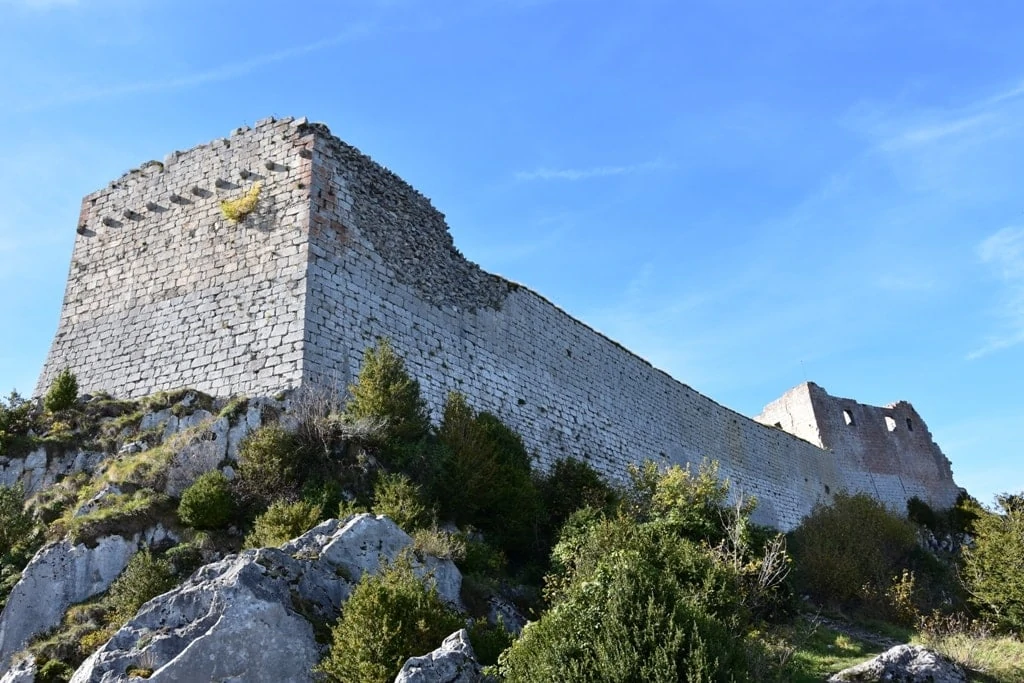
One of the last bastions of Cathar resistance, Montségur fell after a long siege in 1244. The present fortification was a post-crusade construction, but in the early 1240s, a Cathar castle stood there which held around 500 inhabitants, including Cathar ‘Perfects’ and a small garrison.
Around 200 Cathars who refused to renounce their faith were burned at the stake following the fall of the castle.
Termes
Standing above the village of Termes, on a rocky outcrop defended on three sides by deep ravines, the Cathar castle of Termes was a considerable fortification. It covered an area of 16,000 square metres and fell in November 1210 following a four-month siege.
Puilaurens
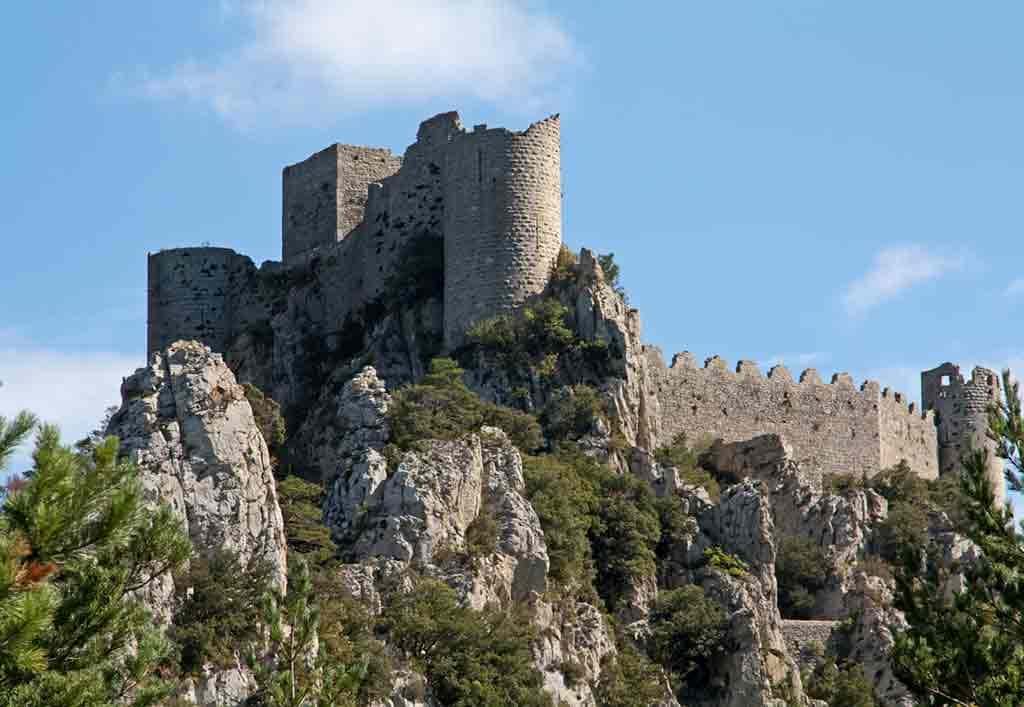
Positioned on a soaring rocky outcrop above the Boulzane valley, Puilaurens is an imposing Cathar castle. Featuring a square stone keep, surrounded by a curtain wall with four circular towers, the castle was accessible by a thin pathway up to the hilltop. Thanks to the steep sides of the hill Puilaurens was built on, attacking the fortification would have been extremely difficult.
Peyrepertuse
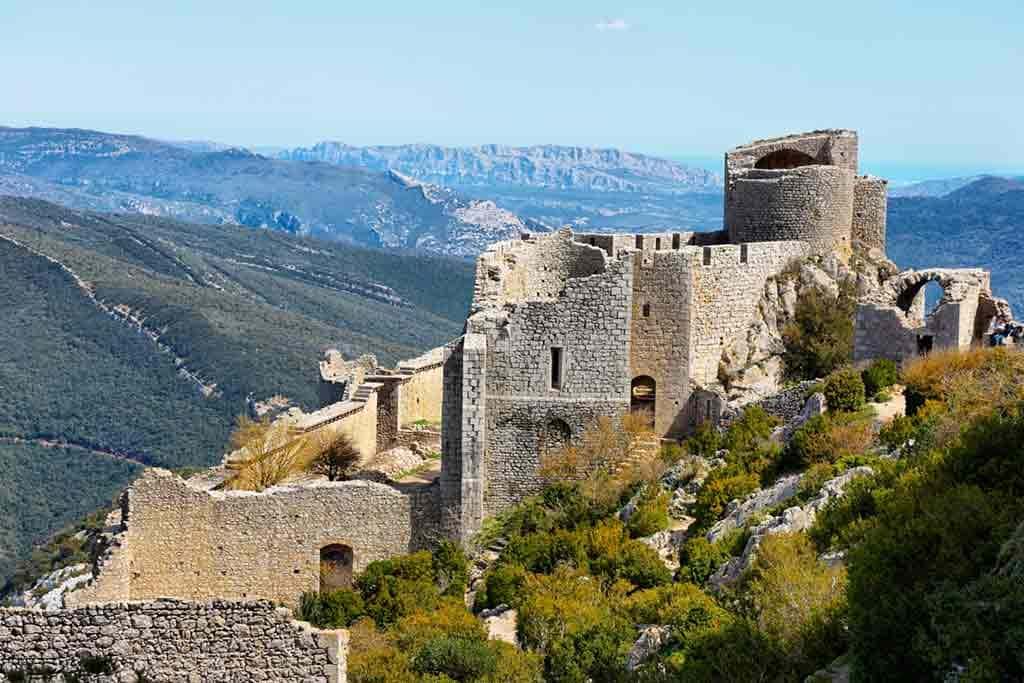
Located in the French Pyrenees, Peyrepertuse was never actually attacked by the Albigensian crusaders, but was surrendered to them on two occasions as the balance of power shifted.
The castle featured a triangular-shaped curtain wall punctuated by towers, designed to fit on a spur of rock high in the mountains. The name Peyrepertuse actually derives from the Occitan phrase Pèirapertusa (pierced rock).
Usson
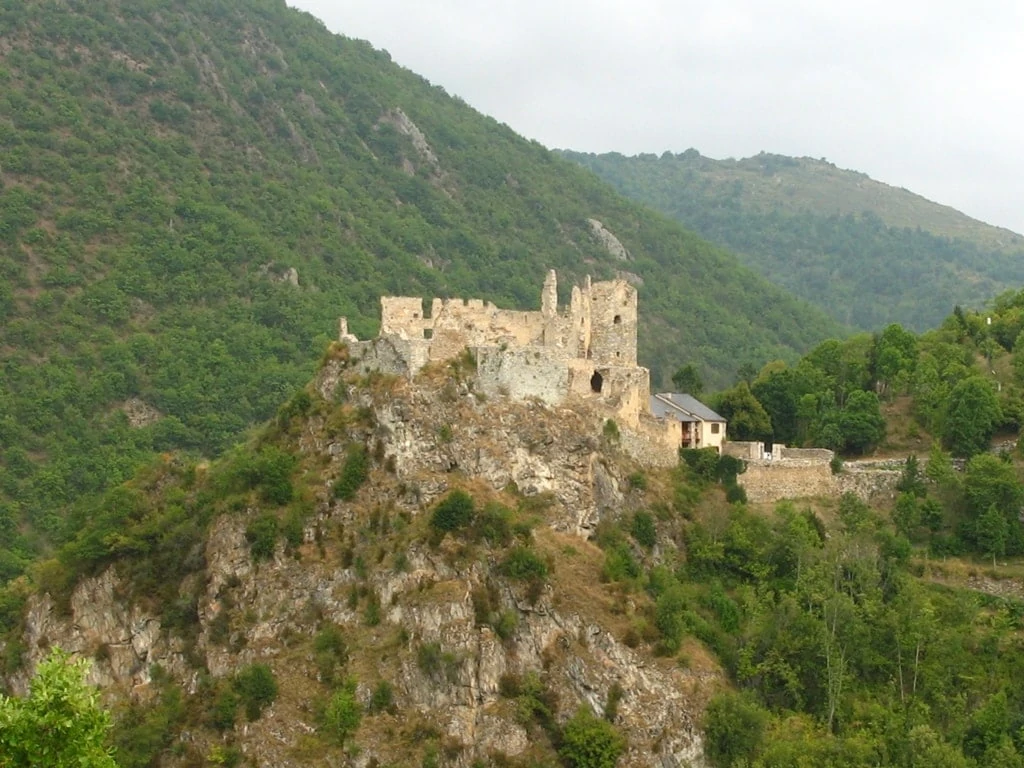
A small castle in the foothills of the Pyrenees, Usson marked the eastern border of territory controlled by the counts of Foix. Thanks to its isolated position, the castle became a place for persecuted Cathars to flee to. The Cathar bishop of Toulouse, Guilhabert des Castres, supposedly sheltered here too.
Pieusse
A very simple stone keep or donjon – Pieusse it thought to be the most representative example of a Cathar castle that survives to this day. Although it has a modern roof, the keep is a tall rectangular structure with very small windows, built all of stone. A Cathar council was held at Pieusse in 1225, where the Cathar bishop of Razès was elected.
